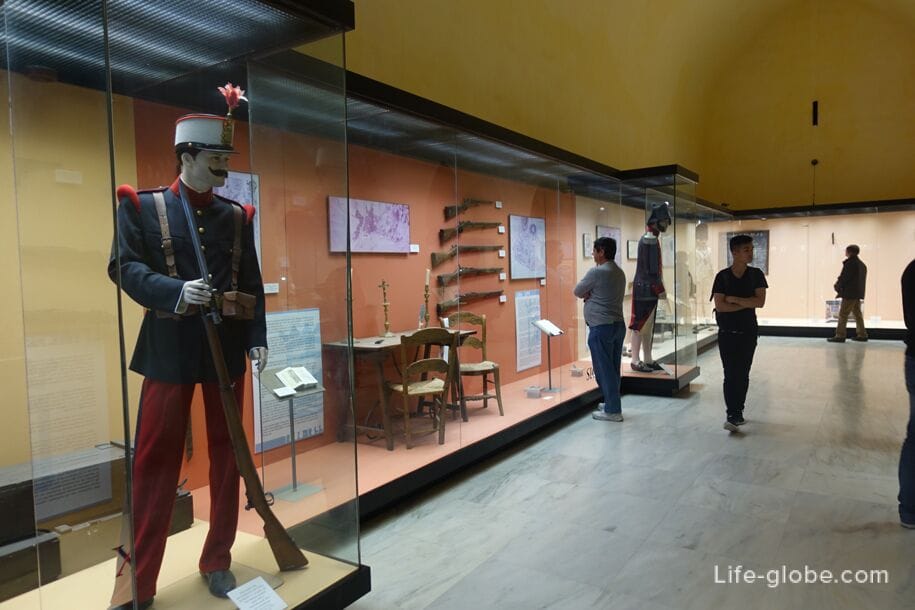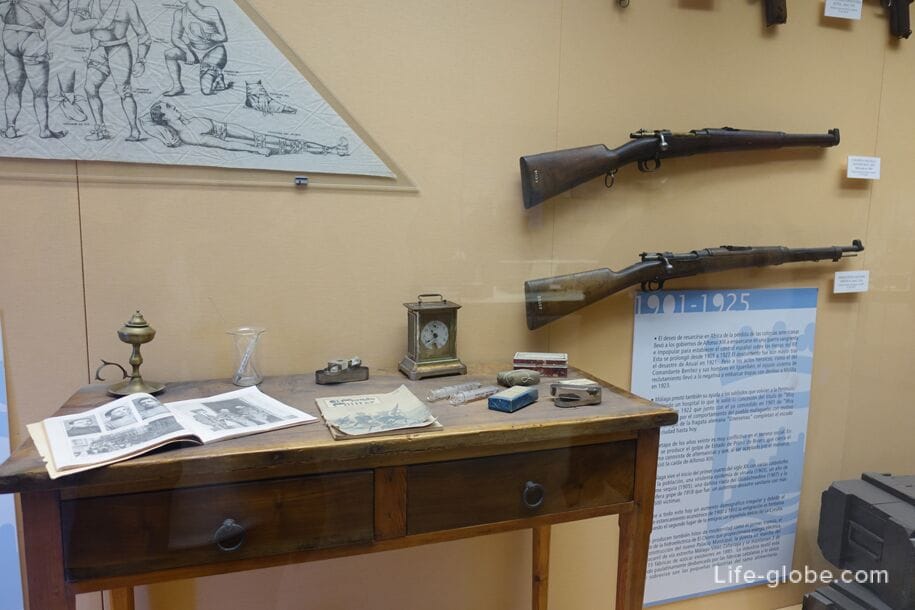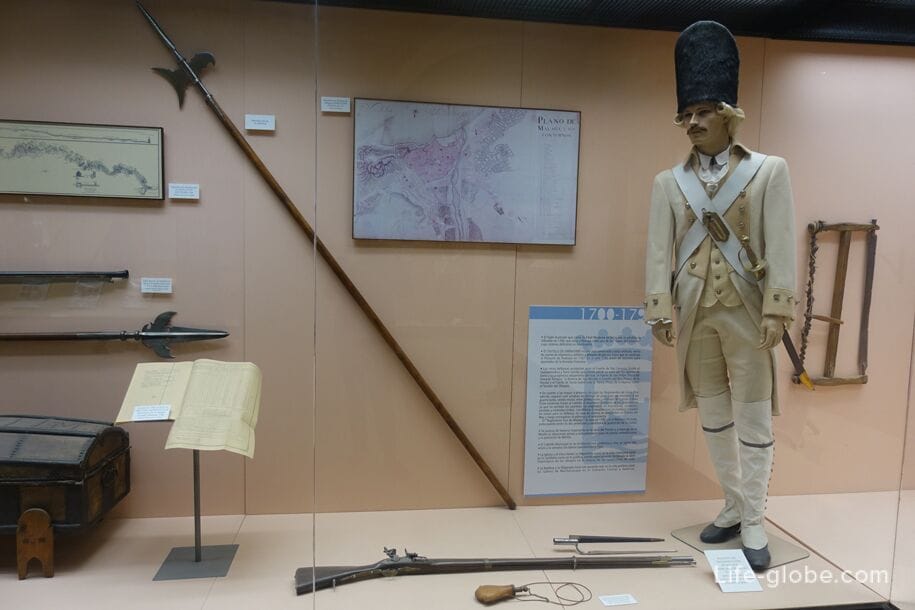
There are two stunning historical sights in Malaga that together create an exquisite monumental ensemble - these are the fortresses of Alcazaba and Hibralfaro.
Interesting! In the Arab period, the sea reached the third lower the protective wall, which to date has not been preserved.
Both castles have a convenient location, they are close to each other, in the historical part of málaga, walking distance from Central Malaga port.
To visit both castles with a single ticket for € 3.55, or individually for € 2.20 each fortress. Entrance tickets are purchased at the box office at the entrance, the order of visiting the castles does not matter, the price is one, the box office is at the entrance to both fortresses. But, since the Alcazaba fortress is located closer to the tourist center of the city, while Hibralfaro is a bit distant, behind the Alcazaba on a hill, more often the tourist route begins with the Alcazaba fortress.
The fortresses can be visited from Tuesday to Sunday. In summer, from 09:00 to 20:00 in winter from 09:00 to 18:00. The entrance to the fortress is not available 30 minutes before closing, and since the fortresses are not connected to each other by internal premises, if you purchased a single ticket, you need to enter the second fortress before closing the entrance.
The Alcazaba or as it is also called the Fortress of Malaga (Alcazaba de Málaga) - Malaga citadel, which is a fortified Palace of the Muslim era, located in the foothills of the eponymous hill of Gibralfaro.
Of the two fortresses of Malaga, the Alcazaba has been preserved to our days the best, so is probably more interesting to visit, while the Gibralfaro less fortunate, from it, for the most part, only fortress walls, gates and towers remained. However, the view of Malaga, opening from the walls of the Gibralfaro, just gorgeous.
The Alcazaba is an incredibly impressive eponymous castle, built in the 11th century, was once the Palace-fortress of the Muslim rulers of the city.
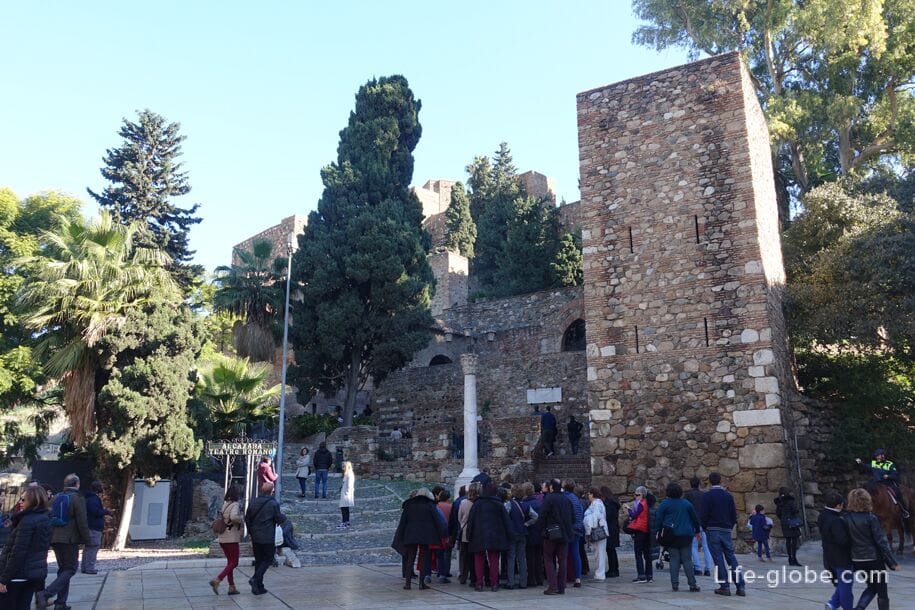
For the construction of the fortress used the natural limestone, which has the property of rapidly decomposing. This drawback was the reason that over the course of its history the fortress survived the reconstruction it simply needed. One of the major reconstructions of the fortress was made between 1040 in gg 1065 Granada ruler Badis ben Habus. At that time fortress was strengthened and expanded to such an extent that many researchers, referring to this chronicle, consider him the builder Alcazaba. The Palace, mostly built in the 14th century, has survived the last major restoration in 1930.
One of the first researchers of the fortress was Professor Leopoldo Torres Balbás, who noted the complex of preserved fortifications, among which it is worth highlighting:
- the entrance vaulted gates (Puerta de la Boveda) built in the bend, whose shutters were closed one on top of the other, which was done to make it difficult to advance and increase the defensive ability;
- entrance Column gate (Puerta de las Columnas) in the construction of which the material from the Roman ruins was used.
The gates, together with the fortress wall, provided additional protection for the fortress.
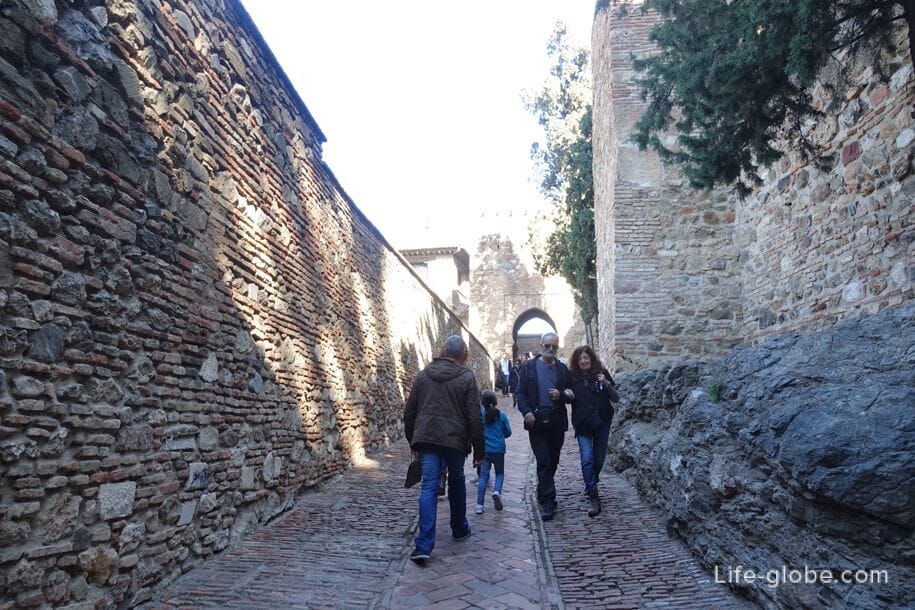
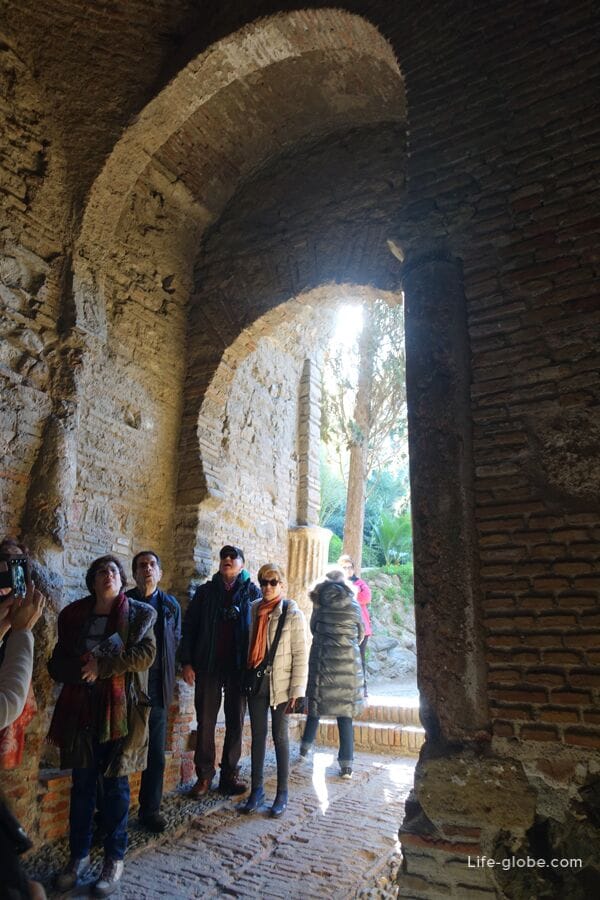
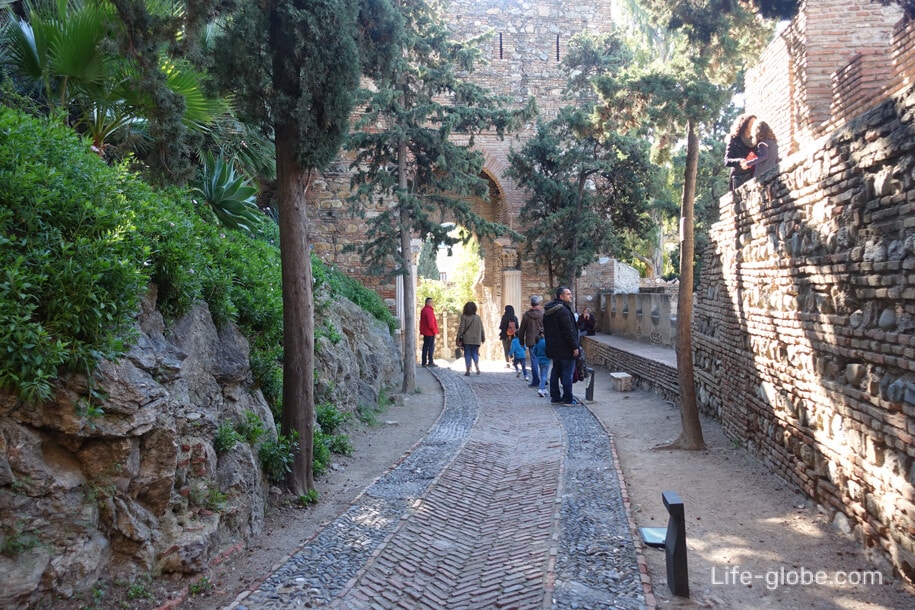
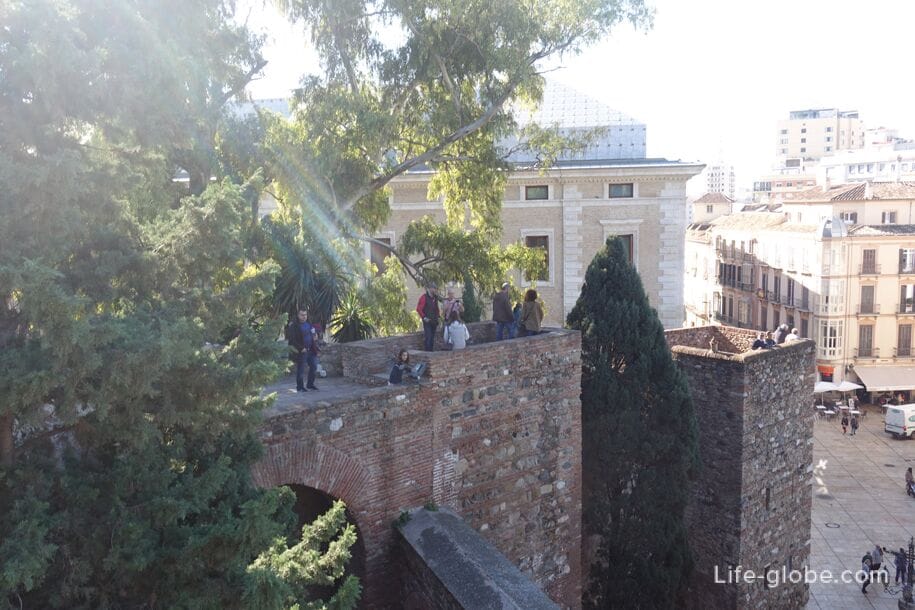
Moving through the castle further you can see the once beautiful exit to the Haza de la Alcazaba meadow and impressive fortified walls, which you can climb up and enjoy the views.
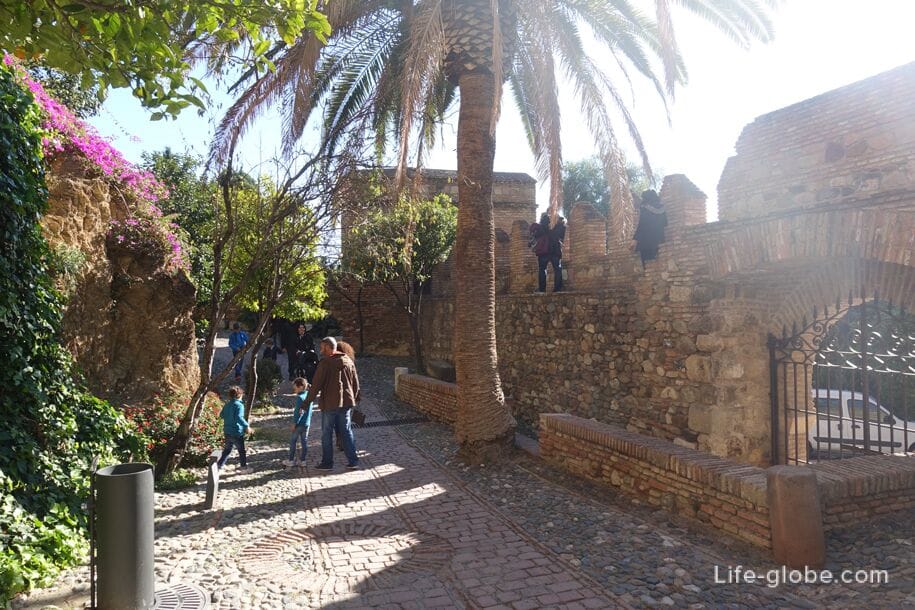

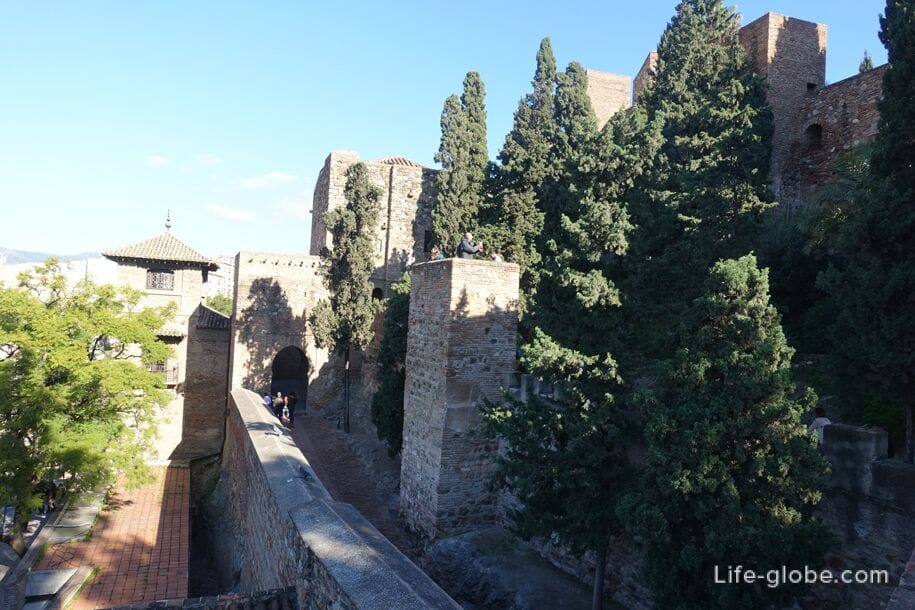

The first fortress wall, built on the topography of the hill, completely protected the spacious outer courtyard, which can be reached through the so-called Christ Tower (Torre del Cristo) located in the side aisle, in which, for many years, the chapel was located.

Passing through the gates of the Tower of Christ see the silo tower
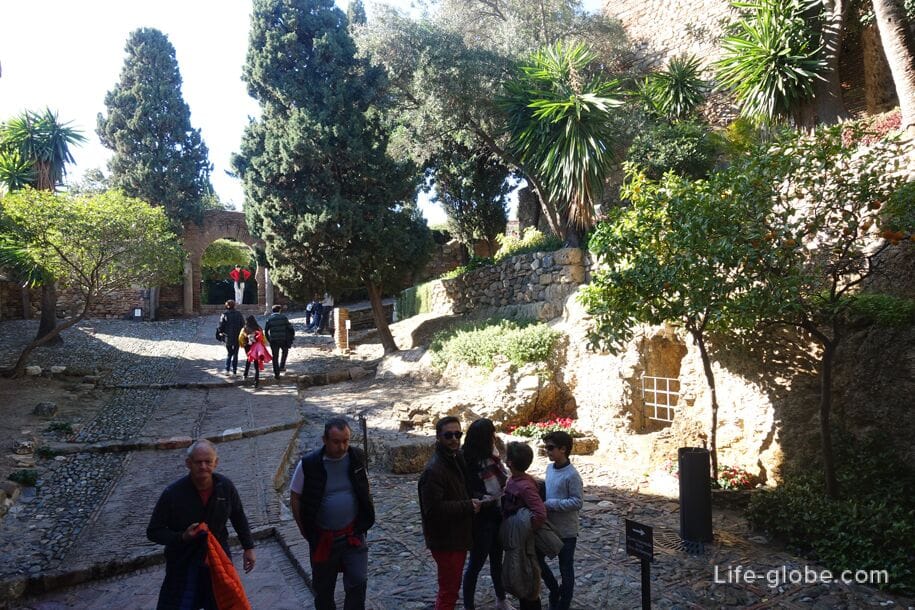
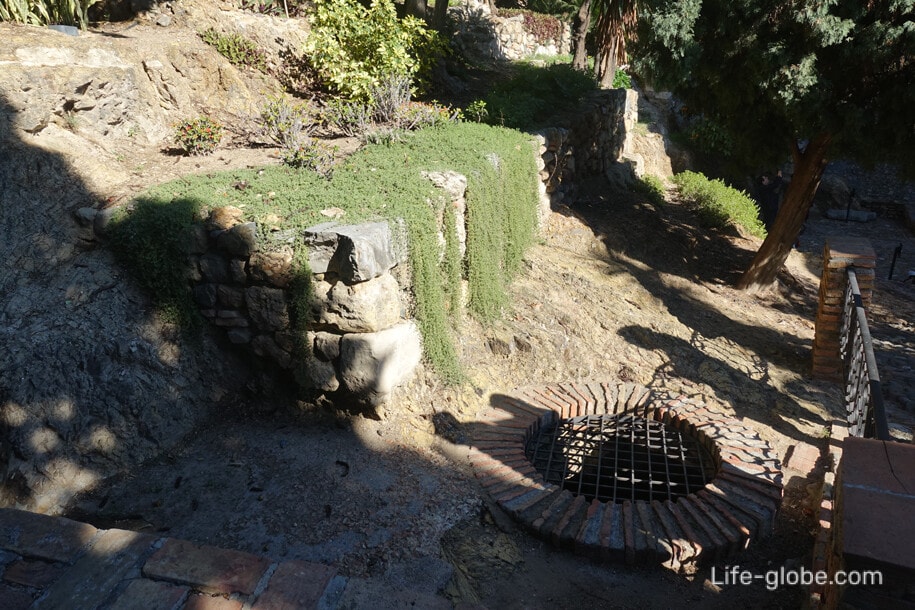
And behind it the inside Weapon patio. This spacious patio has been remodeled and today looks like a beautiful garden with flowers and a small fountain in the center.
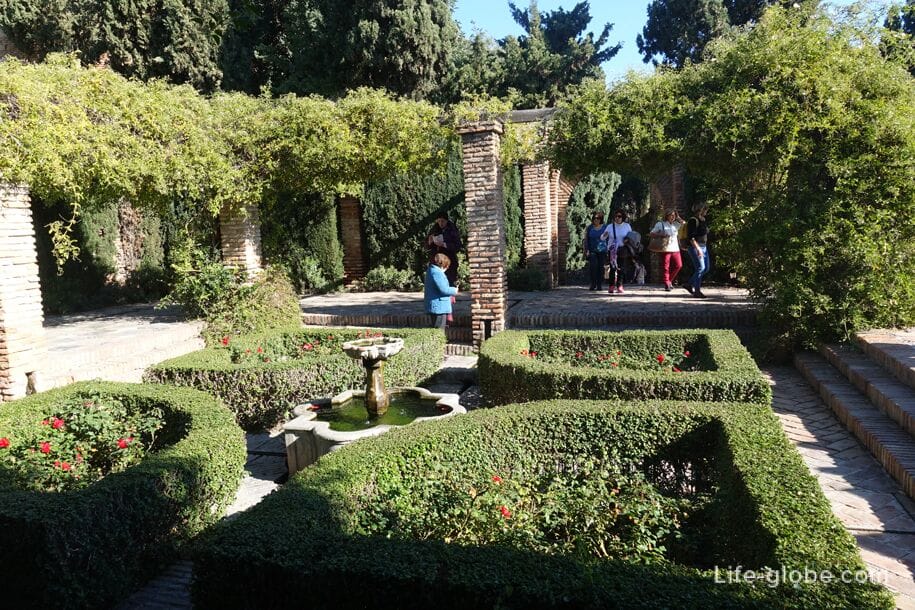

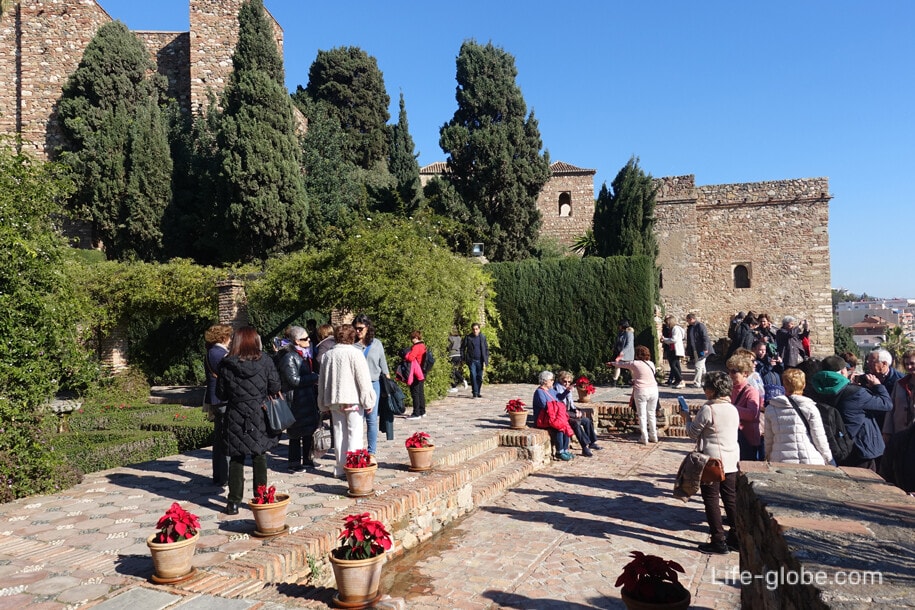
Behind the Armory Courtyard, through a narrow stone passage, through the gates of the Granada apartments (Puerta de los Cuartos de Granada) we go out into the inner part of the fortress palace.
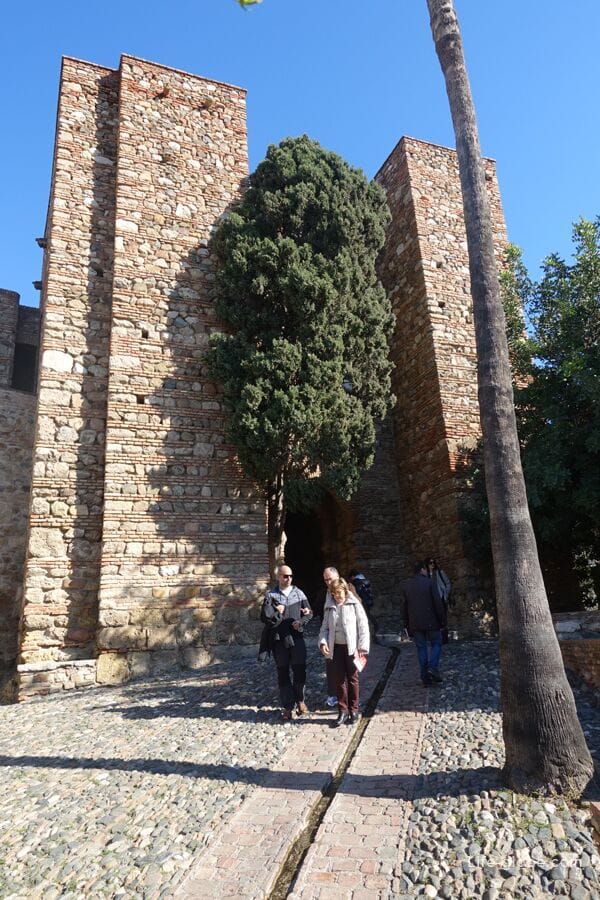

It was here, in the inner part of the fortress was a Palace-the residence of the rulers of the city, which was built in three stages over 11, 13-14 centuries, is surrounded by residential neighborhoods of the 11th century.
Currently, in the renovated premises of the inner part of the Palace are the exhibition halls of the archaeological Museum, with exhibits of ceramics of Muslim rule, where you can also see a big old oven for baking dishes

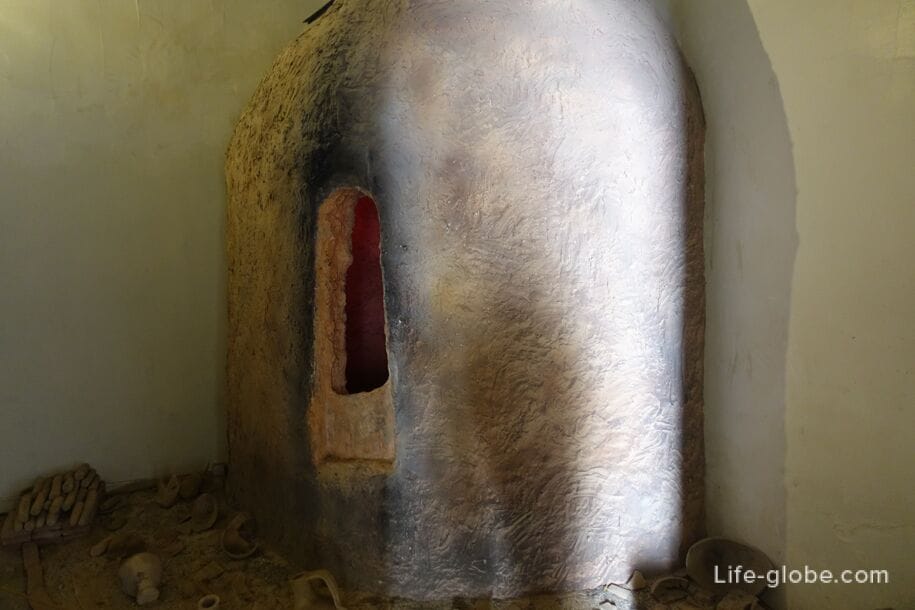
The Palace complex occupied most of the interior space and consisted of three inner courtyards and towers, which, of course, already restored. Currently you can see:
- garden and courtyard of the Fountains with another silo tower. Amazingly beautiful place
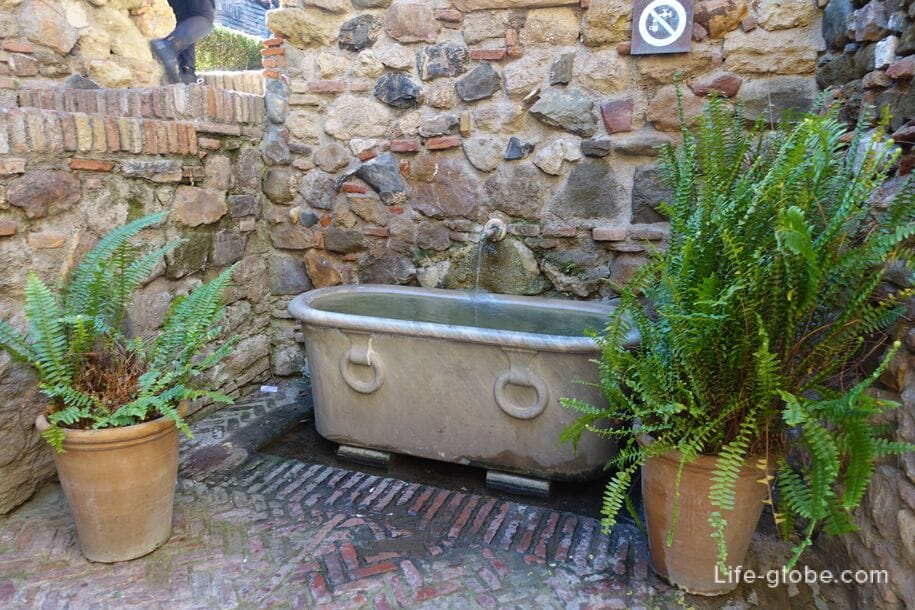
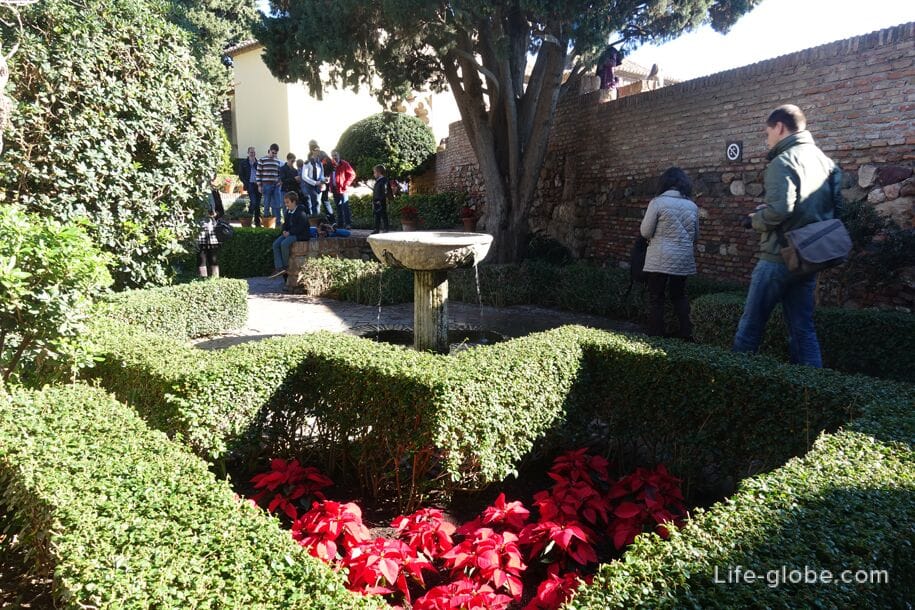
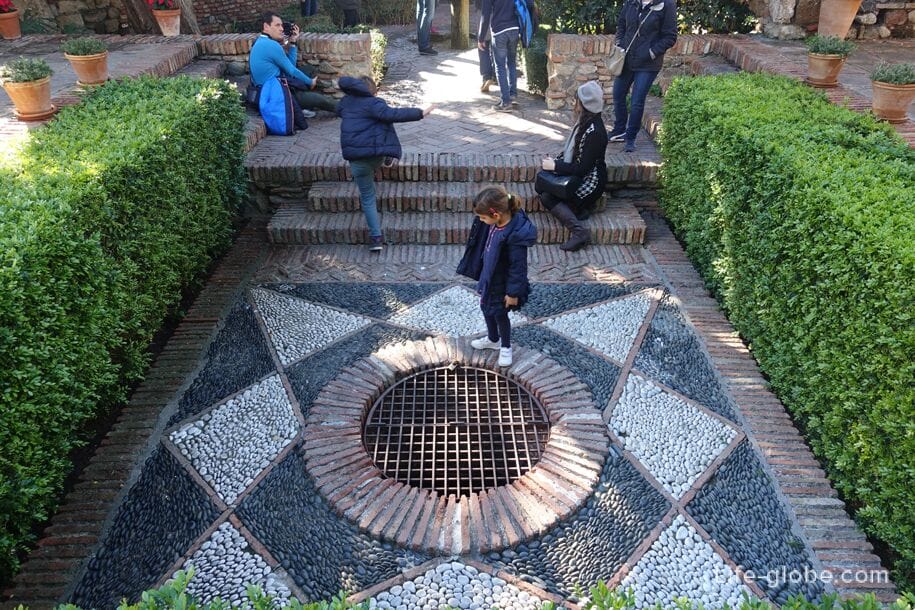

on the south side of the Fountains courtyard, horseshoe-shaped arches are preserved, passing through which we get into a small hall

the hall leads to the Armory of the Mudejar tower (Torre de la Armadura Mudejar), topped with a carved wooden ceiling from the 16th century and
- the Maldonado tower (Torre de Maldonado) and weapons. The Maldonado Tower is decorated with original and preserved marble columns and balconies, currently serving as the observation deck of the castle, which overlooks the city.
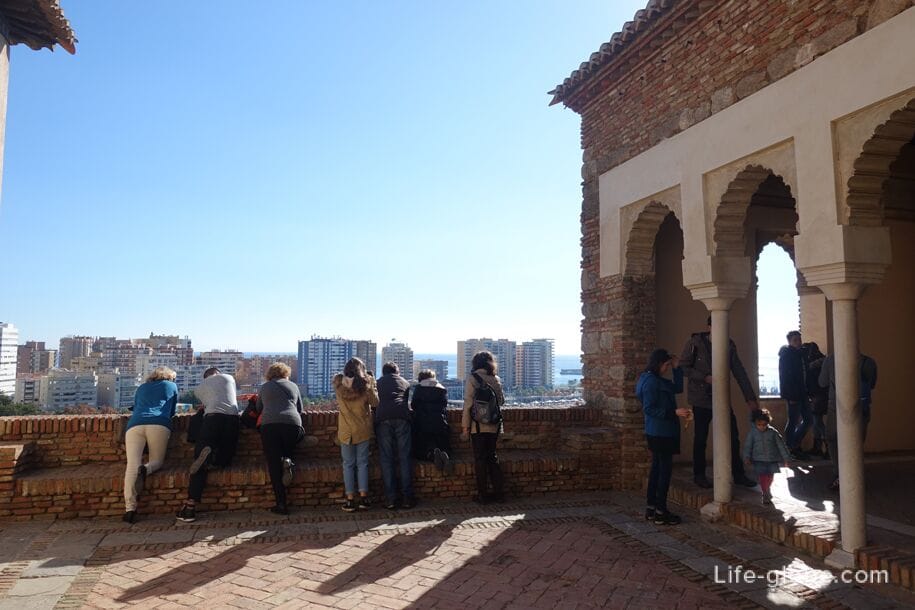
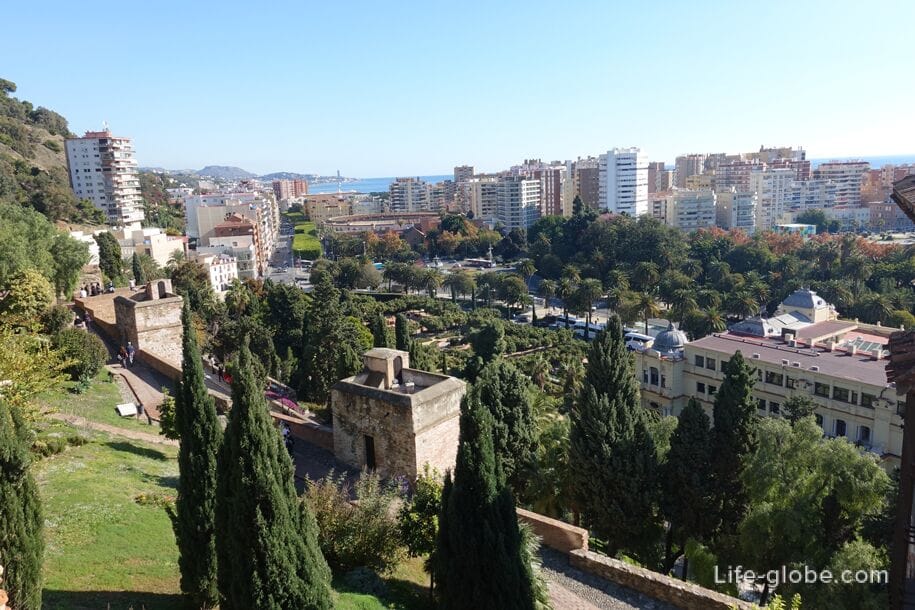
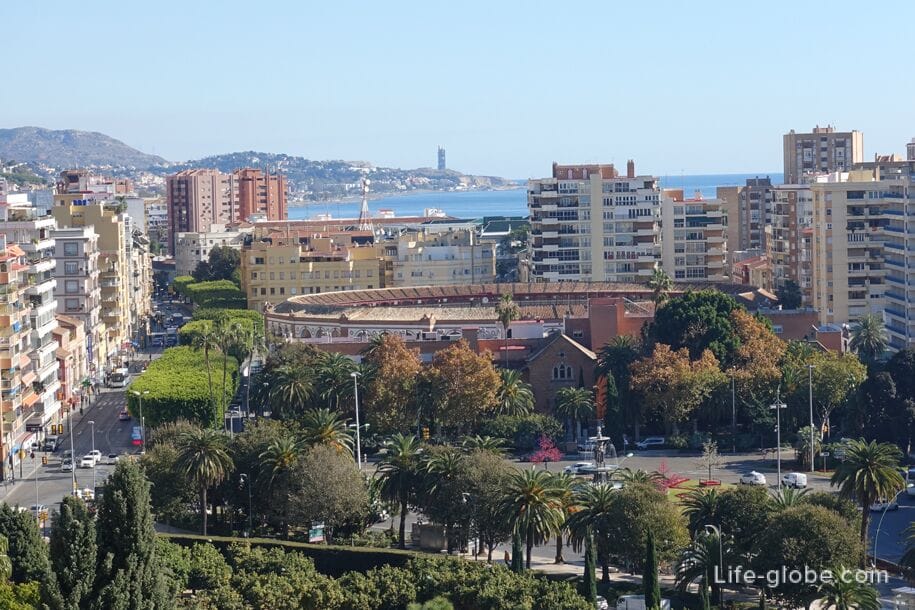
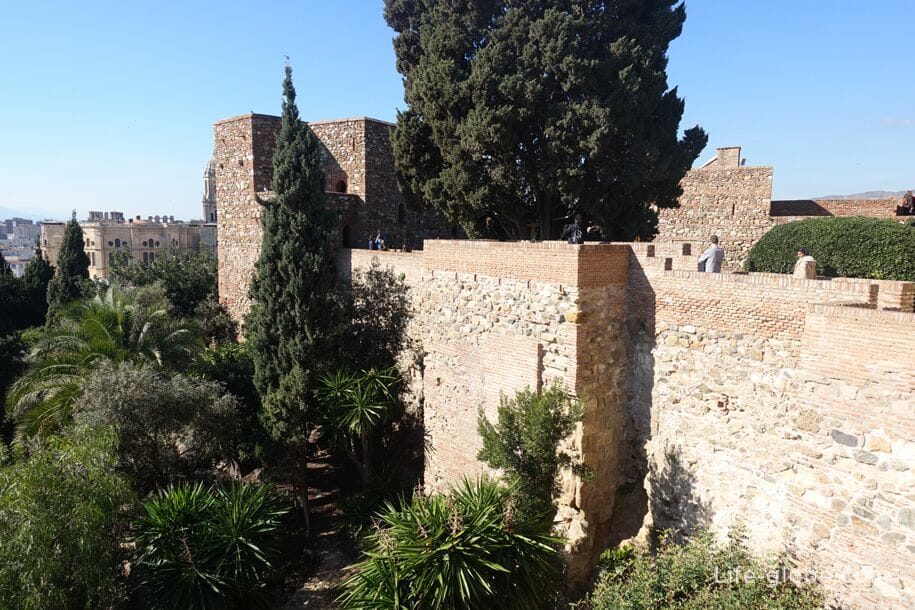
- patio Orange trees
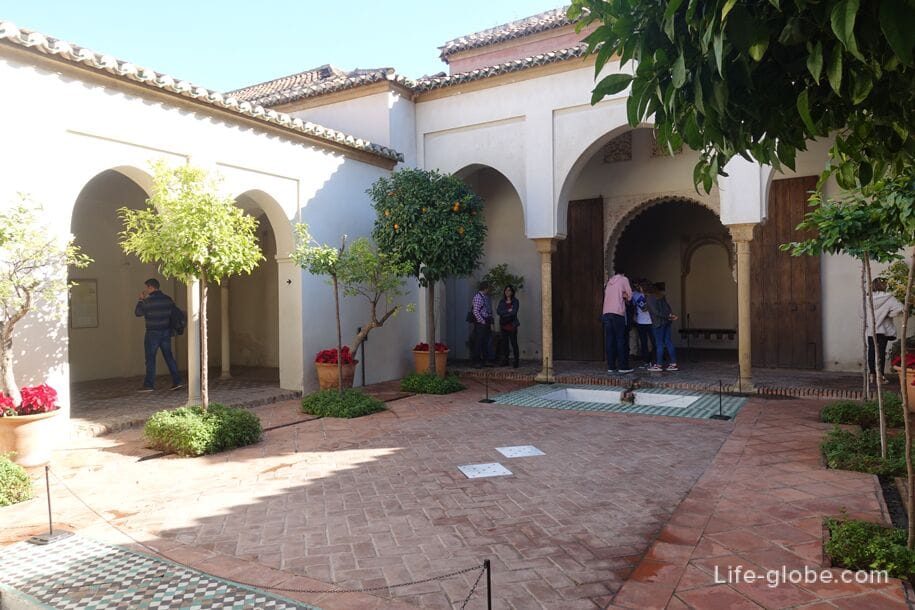
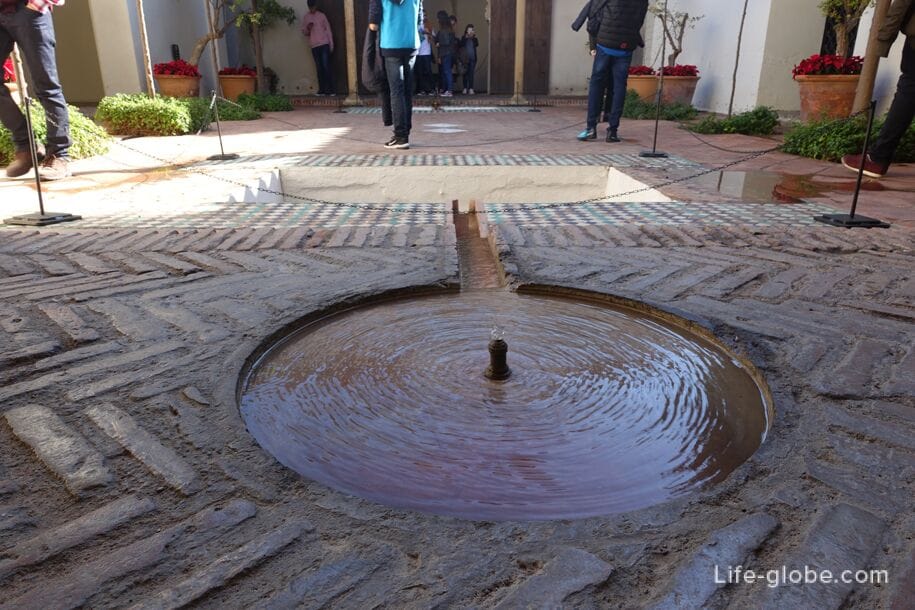
- small patio with pool

All courtyards and the castle itself is surrounded by fortification walls, some of which you can climb and admire the views,


view towering above the old town Malaga Cathedral

whereas along others can only walk. Great outdoor space for walking and panoramic views, is that part of the fortress, which is located along the alley don Juan Temboury (Paseo Don Juan Temboury). Here the paths and flower beds, places for recreation and the remains of a castle, and in the far east corner there is a small bar with drinks and snacks.
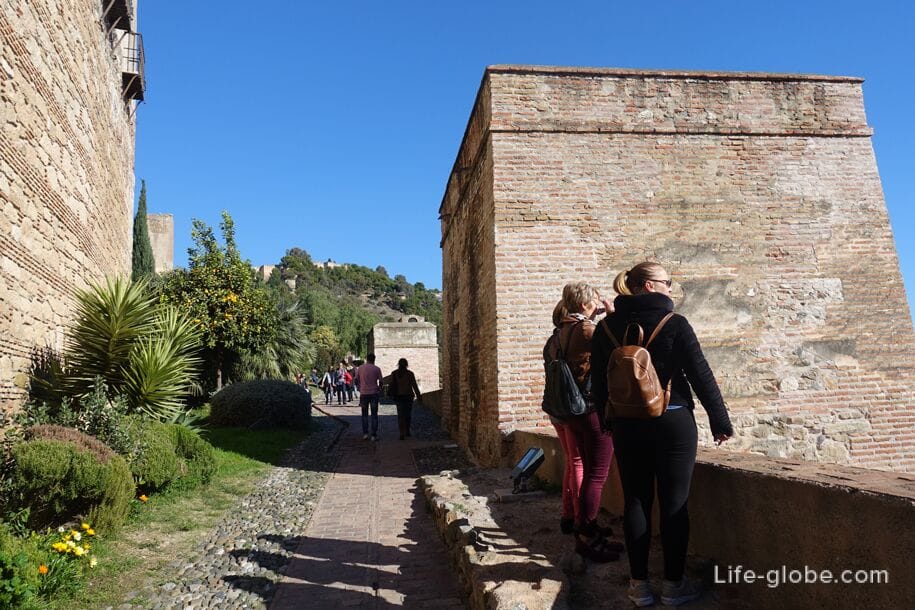


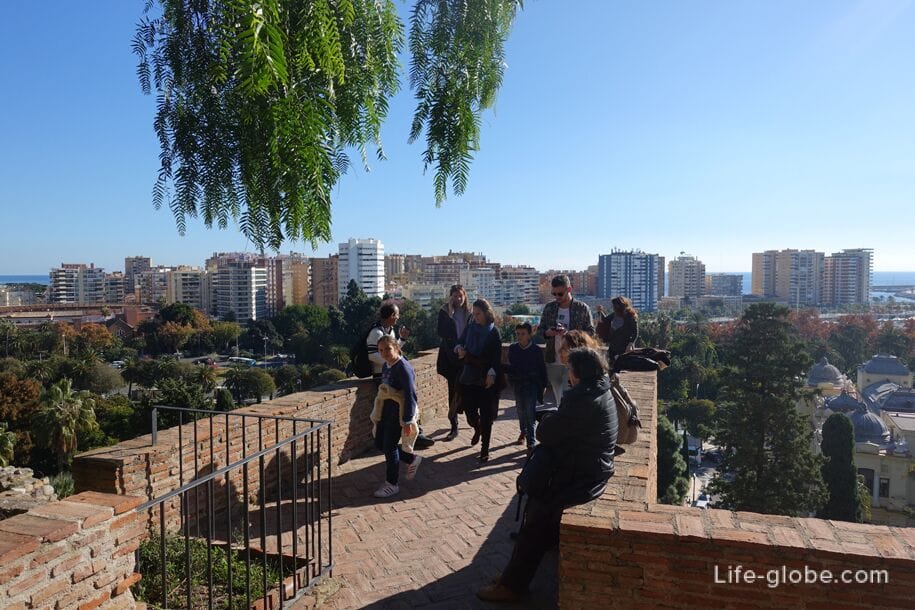
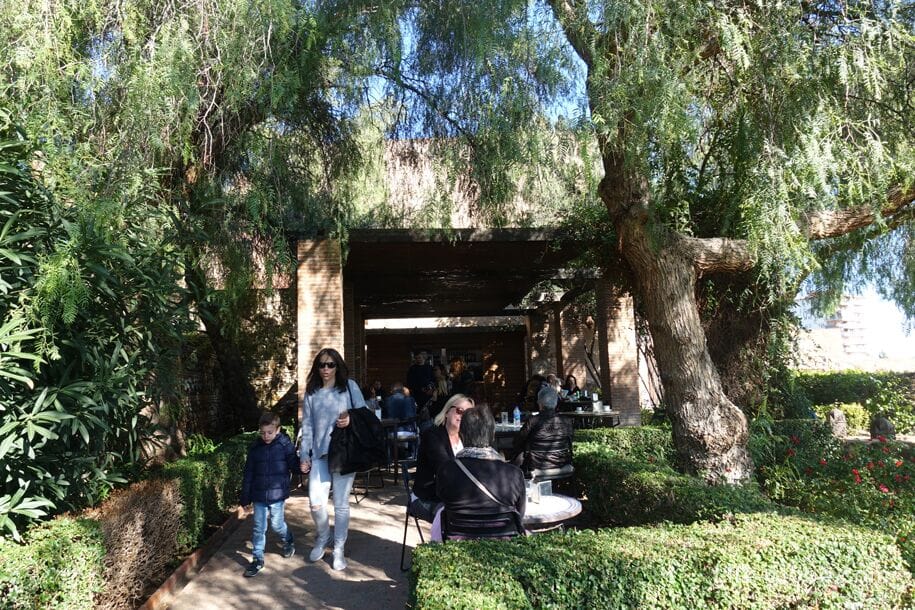
Once on the eastern side of the castle one could go into a narrow long courtyard - Karachi, which connected Alcazaba with the Gibralfaro fortress located on the top of the mountain. Currently the passage is closed. Also, some other premises of the Alcazaba castle are currently closed to visitors: a prison, a patio courtyard with reservoirs, an 11th-century residential quarter, a tower of veneration and a well.
Leaving the Alcazaba and proceeding along the city walls from the South-East side, breaking the uphill on winding paths, we get to the second fortress of Gibralfaro

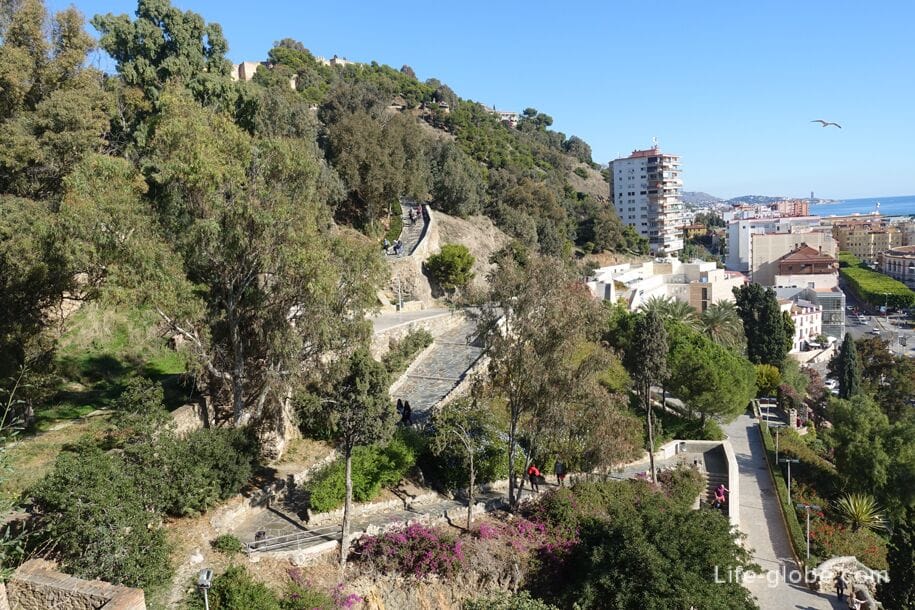
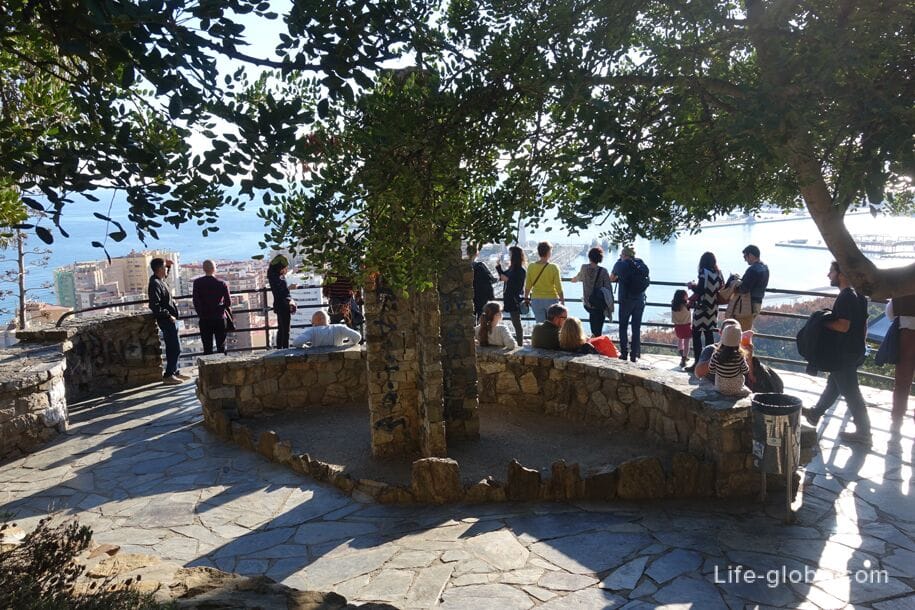
At the ticket office we show already purchased tickets and go inside.
The Gibralfaro Fortress (Castillo de Gibralfaro) is a monumental citadel towering above Malaga, located on the very top of the hill of the same name.
Of Gibralfaro castle refers to buildings of the 14th century and not as well preserved as the Alcazaba. The basis of Gibralfaro currently make up the defensive walls and towers, and an inner area representing the yards.
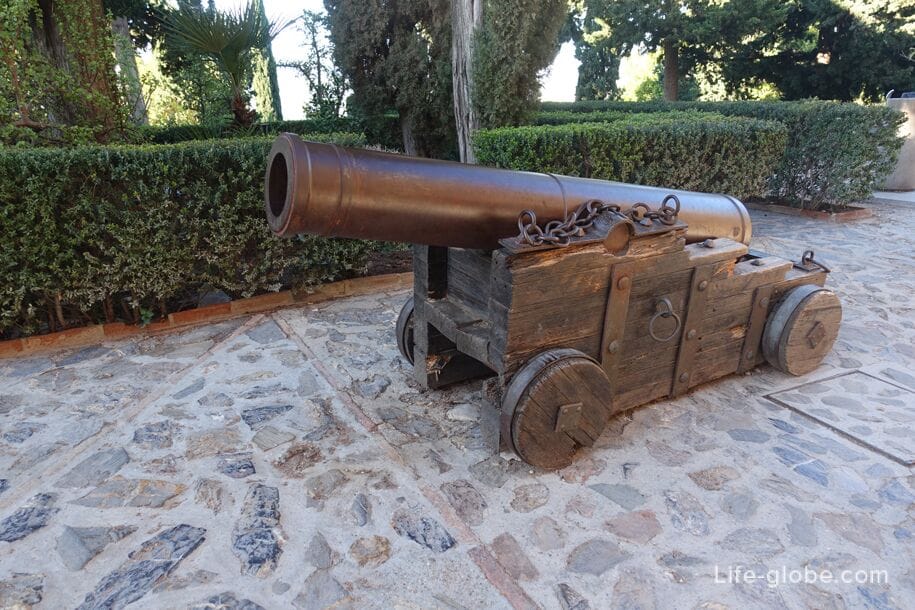
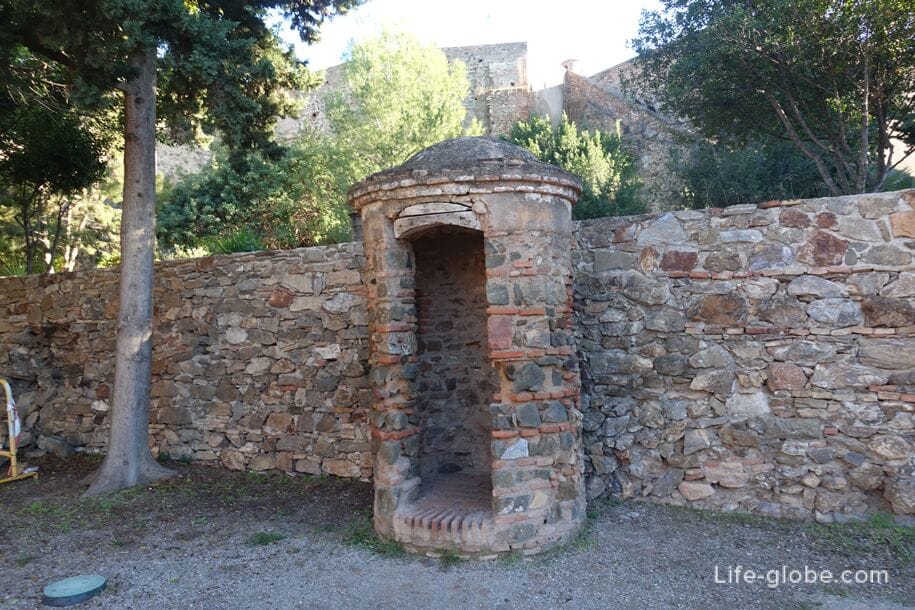

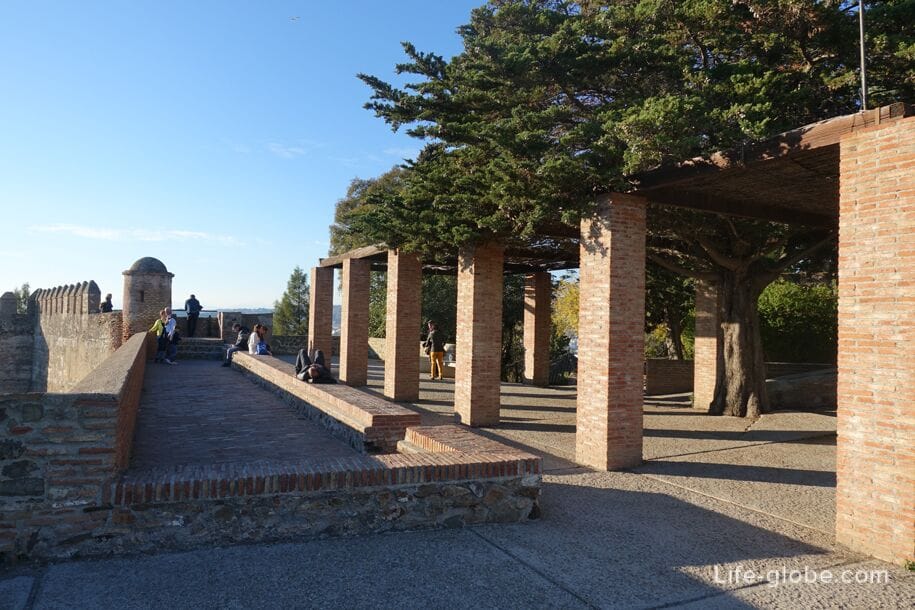


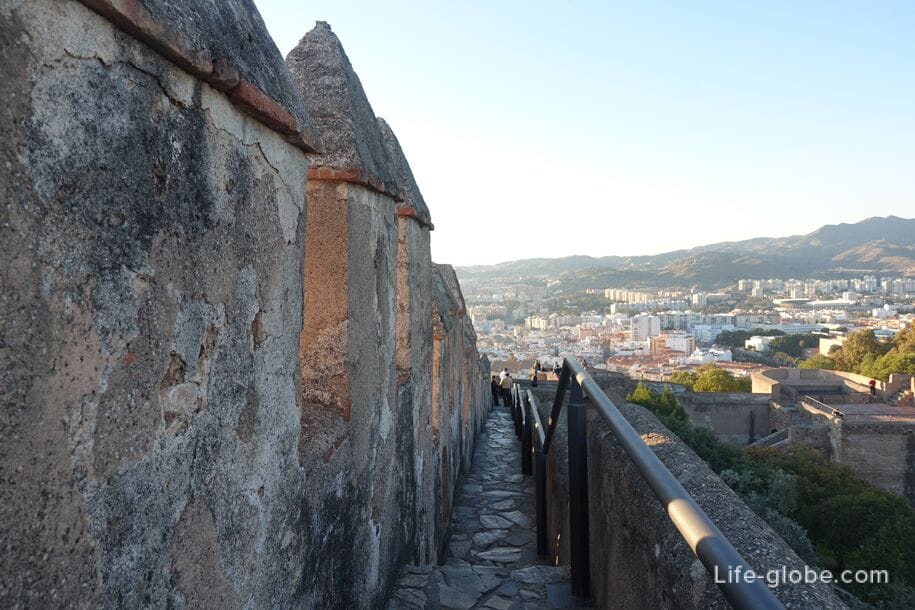
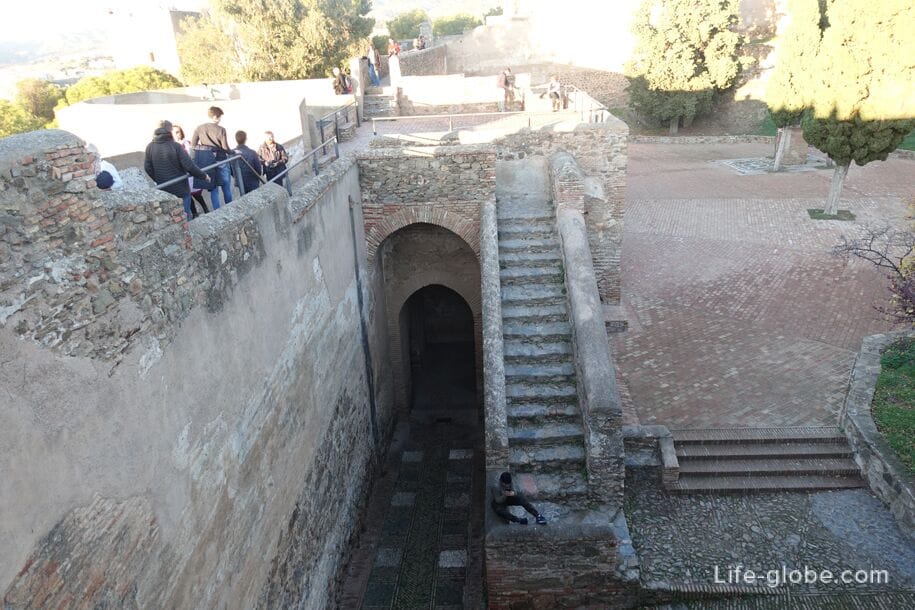


From the walls of the fortress unique views of Malaga and the surrounding area.
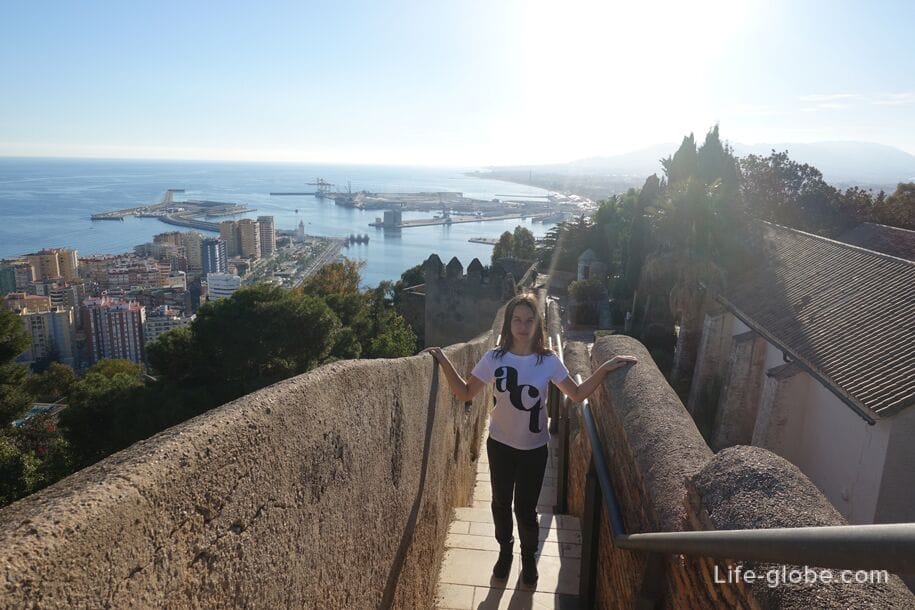

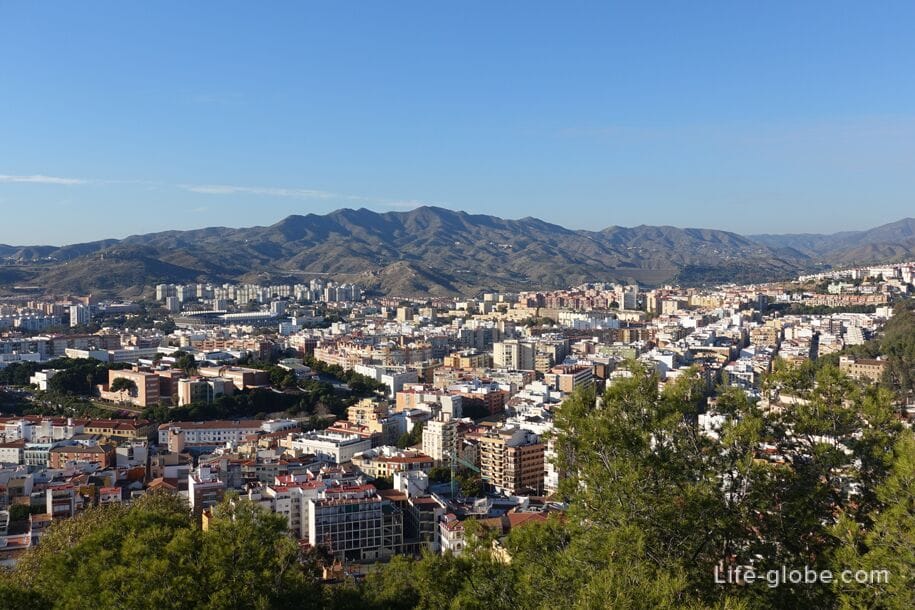
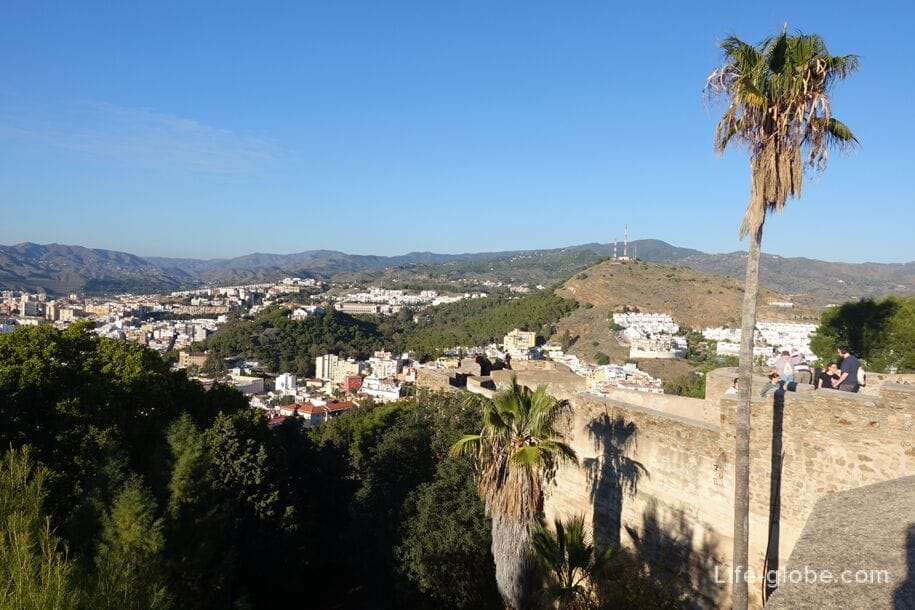

In the center of the fortress is a small museum, which displays an exhibition of armor, swords and other items of historical significance.
